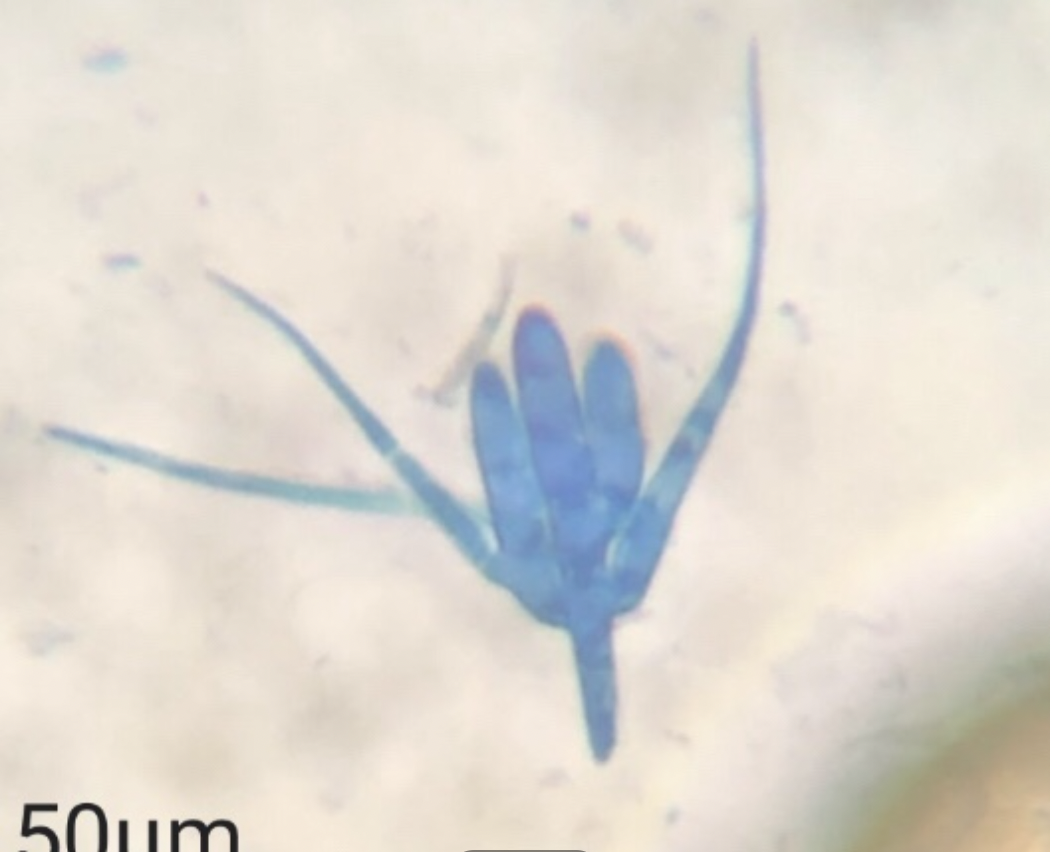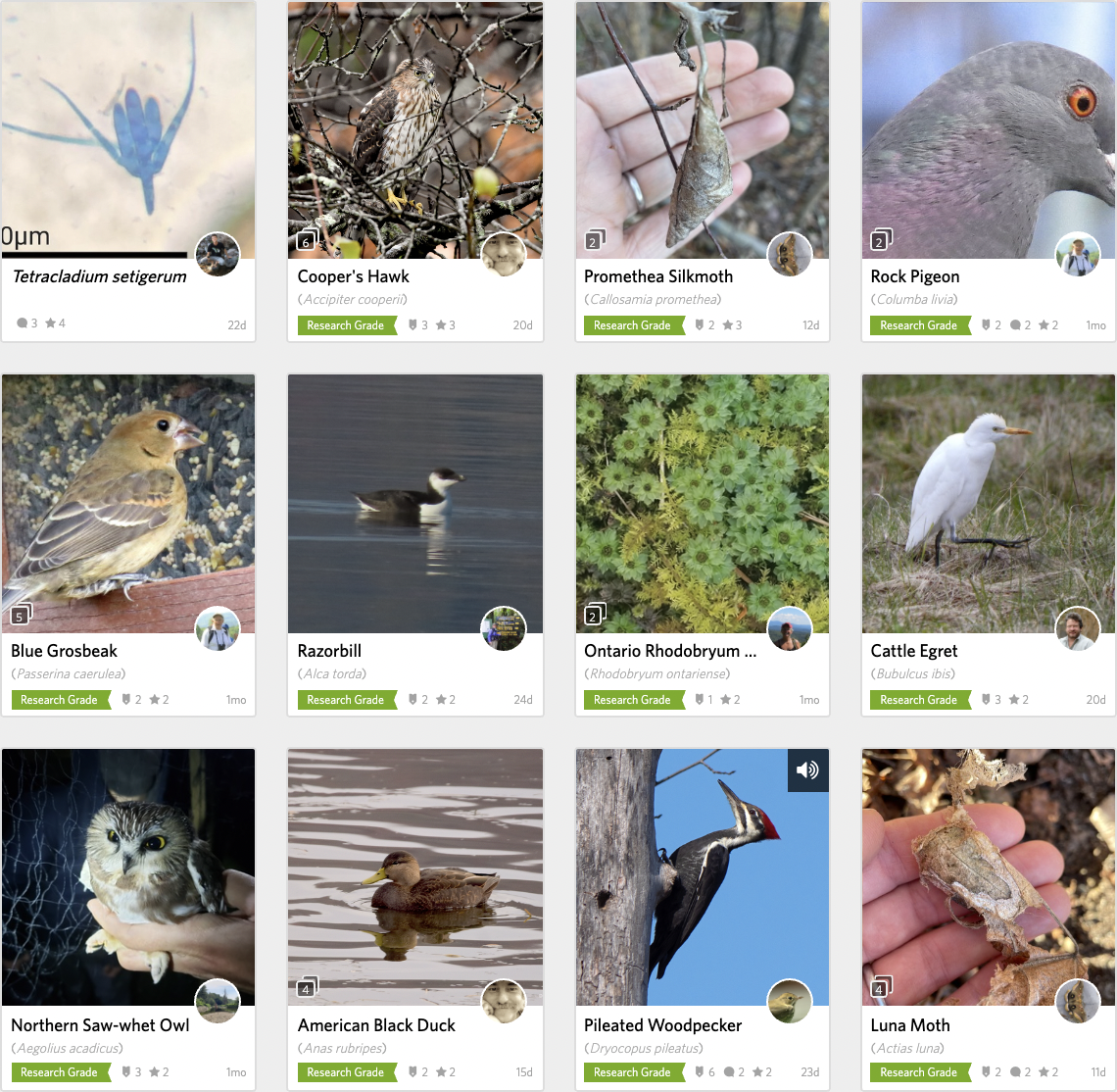
A conidium (a kind of fungal spore) collected from a sample of Black River foam in Craftsbury, VT. © Connor Quinn
Congratulations to Connor Quinn for winning the November 2021 Photo-observation of the Month for the Vermont Atlas of Life on iNaturalist! Connor’s photo taken through a microscope of a minuscule fungal spore received the most faves of any iNaturalist observation in Vermont during the past month.
Connor is an undergraduate student from Vermont with an interest in aquatic hyphomycetes and other ascomycetous molds. Unlike the fungi many across Vermont are familiar with, from the edible Hen of the Woods to the colorful Fly Agaric, the fungi that pique Connor’s curiosity lack fruiting bodies, and instead are identified based on the structure of their spores that can be found floating around in air or water.
By using a microscope and specialized dyes, Connor was able to isolate and view this fungal spore in a sample taken from foam atop the Black River in Craftsbury, VT. The structure of this particular spore is unique enough to identify it as belonging to a species called Tetracladium setigerum. The specialized nature of the study of these fungal spores means that there are no other records of this species in Vermont (or North America for that matter) on iNaturalist, but thanks to the diligent efforts of Connor this species now has an image and a location marking its place in Vermont’s vast array of biodiversity.
While iNaturalist is dominated by observations of large, observable forms of life such as mammals, plants, and birds, microorganisms also have their (very important) place in a region’s biodiversity. Thanks to people like Connor submitting their observations, we can gain a more full picture of all the miraculous organisms that call Vermont home. In case you’d like to see some more mind-boggling microorganisms, check out some of the photos of diatoms that have been submitted to the Vermont Atlas of Life on iNaturalist.

With 3,306 observations submitted by 476 observers in November, it was very competitive. Click on the image above to see and explore all of the amazing observations.
Visit the Vermont Atlas of Life on iNaturalist where you can vote for the winner this month by clicking the ‘fave’ star on your favorite photo-observation. Make sure you get outdoors and record the biodiversity around you, then submit your discoveries and you could be a winner!
